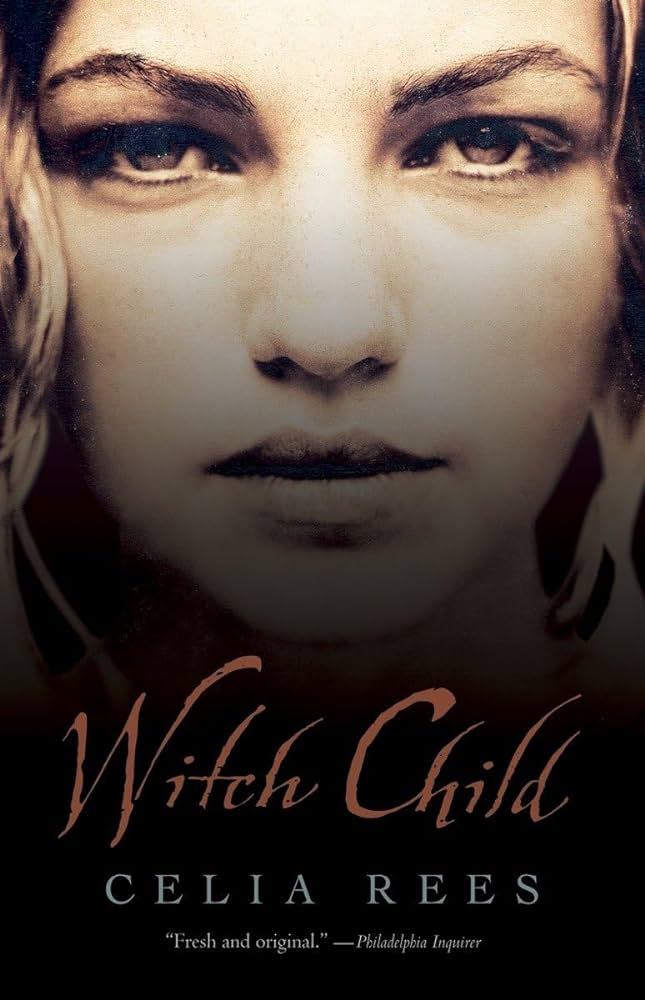It should come as no surprise that I loved learning about the Salem Witch Trials of 1962 and 1693. I didn’t learn about them in depth until I did a research paper in my college Religion class, listening to spooky music and reading various accounts on the unfortunate accused, the manic accusers, and the legends that came from this dark chapter of American history.
In truth, the only witchcraft happening in Salem was the curse of being a woman or simply different to the norm. Or perhaps you and your neighbor got into a scuffle over their desirable land, so you accused your neighbor of witchcraft, got them condemned through speculative evidence at best, and took what you wanted after they went to prison or were hanged. It would not have been a fun time to be an undesirable person or a woman, but especially not if you had special talents or knowledge that the clergy were suspicious of…

Young Mary Newbury watched her grandmother be accused, tried, and hanged for witchcraft in their English village. With nowhere to go, she boards a ship heading for the New World in America, where surely she’ll have a little more freedom. But her skills as a learned girl and a healer quickly catch the attention of villagers and clergymen alike, especially when she gets closer to a local Native boy who teaches her more healing secrets. Even more “normal” girls have to tread carefully, so Mary must conceal her extraordinary nature to stay safe in a village ruled by religious fear and fervor.
Here we have a story about the clash between the “old ways” and religious fervor, and you all know how I enjoy crazy religious folks. And there’s probably no fire-and-brimstone preaching bunch of nuts like the Puritans. You didn’t have to necessarily practice magic to be called a witch; that was an umbrella term for anyone who differed in any way from “normal.” So when you have someone like Mary, who would be in everyday danger just for being a woman, but possesses extraordinary healing and clairvoyance on top of that, the danger increases.
The reason it’s so fun to speculate about real witches in Salem is because of the tantalizing power switch. In real life, the male clergy would have had every power over the women and outcasts of Salem, with the men’s word against theirs. But once you introduce women with magic power who could turn the tides on these frightened, misogynistic men, it becomes a revenge fantasy for any woman who never had power in a world always putting her down. And if there’s one thing more frightening than a single witch with the power to bite back at her wrongdoers, it’s a whole group—a coven of witches.
That extends to why the witch is such a powerful symbol for the oppressed and put-upon of society. She has power and she does not apologize for it. Her power is in her desire for change, for revenge, for pushing back at those who do her wrong. She believes in herself so that she can believe in her inner magic. The witch, whether secretly or openly, shows her teeth.
Of course, Mary is not an alluring vamp witch; she must use her skills quietly, if at all. And she even feels kind of afraid of them, since these same skills got her grandmother killed. But I like how the magic feels true to what real magical practitioners do, without any fantastical glamor. She cannot shoot energy balls, levitate, change her appearance, or things like that. She uses tools and her own mind to produce results, to the point that the reader initially wonders if there is any real “magic” to begin with. That understated nature works better to ground the story in reality, with a lingering sense of danger that not even Mary’s best skills could save her from. After all, we cannot have a witch whose magic can solve all her problems, else there’d be no story.
Despite that Mary makes friends among the settlers, she’s always longing for a true sense of belonging and freedom. The clergy all have sharp eyes and many are distrustful of the people Mary brings closest to her, mostly for their knowledge of herbs and medicines. But I love how Mary eventually finds a solid group of women who vouch for and protect her when the clergy’s suspicions reach her.
But it’s not just the village clergy that come after Mary, because this wouldn’t be a story about 17th century New England settlements without a witch hunt. There are spiteful and vindictive girls in the village that blame Mary for not getting what they want, and they do things that the Salem “witches” would echo later in time to punish their adversaries.
Mary’s story is written as a journal, with a framing device of a modern-day historian attempting to form a coherent narrative about who Mary was. We never know why this person is so interested in Mary, but we can gather that maybe Mary is an ancestor or a fellow witch with whom the historian is trying to connect. Not all the historian’s questions are answered, so she implores for readers to come forward with any new information about Mary, and I like that little element of mystery.
I was not expecting this book to pull me in like it did. The writing is sophisticated and detailed, pulling us through a timeline of a 1660s village trying to settle in a strange new world, but inevitably falling to witchcraft hysteria. I’ve read some great contemporary witch books, but apparently I shall have to seek out more placed in America’s colonial period. This book has a sequel, so at least I know where to start.






An amazing article. I found the witch trials fascinating.
LikeLike